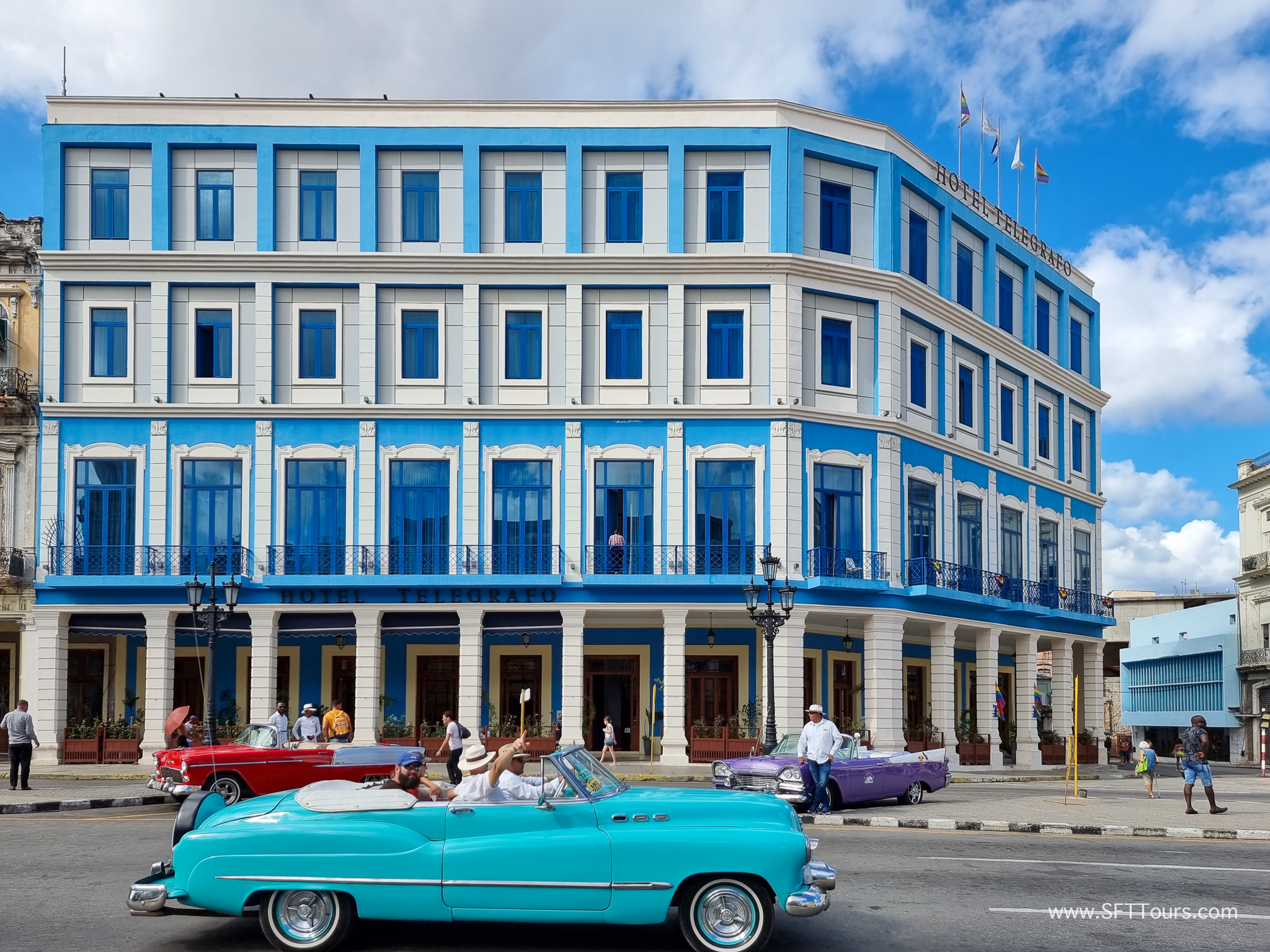Going to Cuba solo? Joining our fun and exciting trip to Cuba? You’re in the right place.
Cuba is a very unique country where you need to completely unlearn travel habits and figure out how to navigate the many complications derived from the decades long embargo.
In this article you will find our expert tips for traveling to Cuba, especially as a solo woman, the things you need to know, some fun facts, and a list of movies and shows about the country, books you can read to go deeper into the culture, and so much more.
Be prepared for your trip with our Cuba travel tips and our packing list here, and get ready for a fabulous trip!
Below is a little history lesson on Cuba to better understand everything that has made Cuba what it is today. To skip right to our travel tips, click here!
A brief history of Cuba
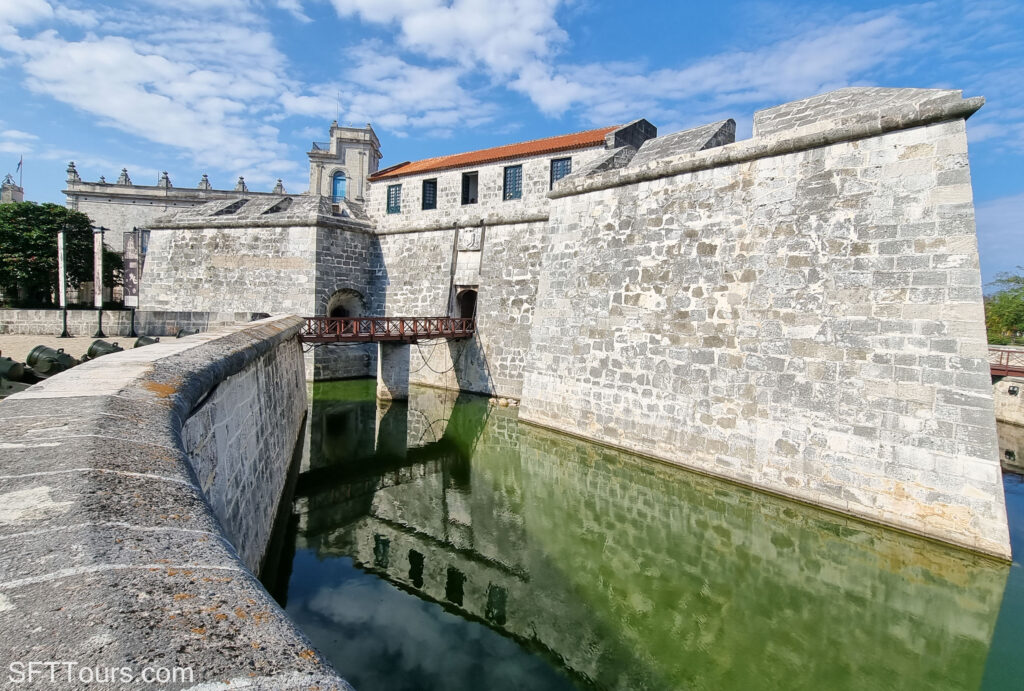
Cuba is a fascinating country like no other, and this is the result of its strategic location in the Caribbean which made it a critical entry point for colonial and African influence into the continent, and the more recent geopolitical tensions between East and West.
Taíno, the Indigenous people of Cuba, inhabited the island when Christopher Columbus arrived in 1492. The Spanish soon claimed Cuba as a colony, beginning a period of colonization that lasted for centuries. In fact, Cuba was the last colony to be freed from Spain in 1898, along with the Philippines.
The native population was decimated by diseases brought by the Europeans, and African slaves were brought from West Africa to work on sugar plantations.
These slaves came from modern day Benin, Nigeria and other parts of the Gulf of Guinea and brought with them the traditions, heritage and religious practices such as Voodoo and Santeria that are still practiced in Cuba today by their descendants.
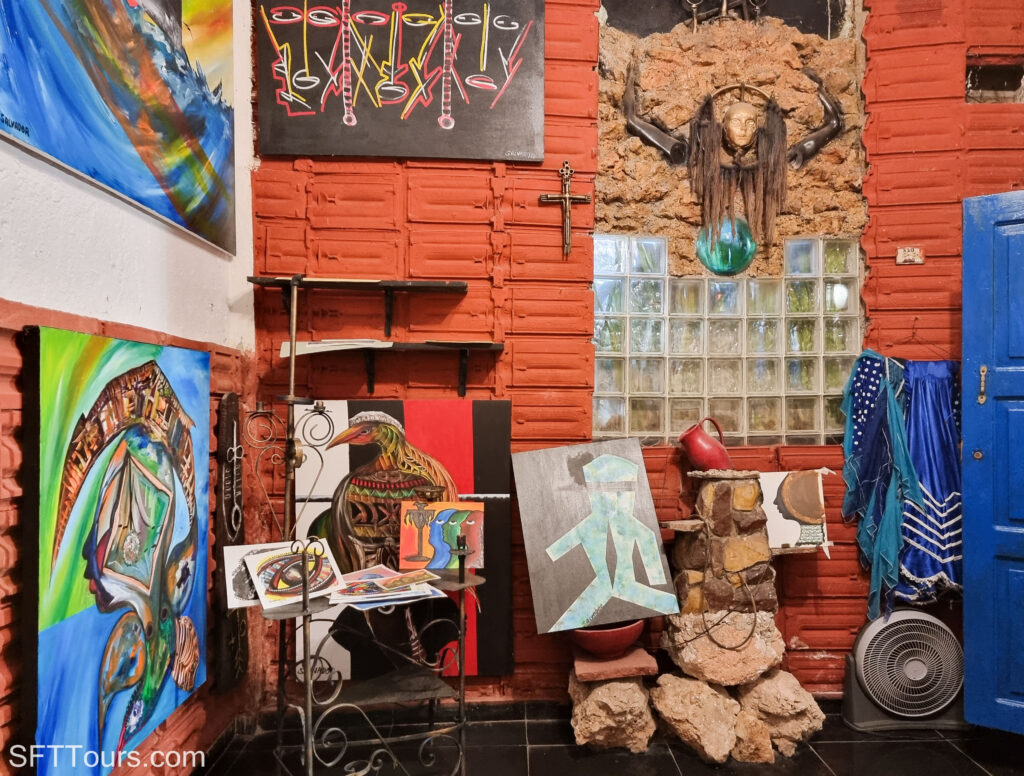
By the 18th century, Cuba had become a key player in the transatlantic slave trade and a major sugar producer.
The wealth generated by the sugar industry led to the establishment of large plantations, and Havana, the capital, became a flourishing colonial city. However, this prosperity was built on the backs of enslaved Africans who endured inhumane and deadly conditions until 1886 when slavery was officially abolished in Cuba.
In the 19th century, Cuba became a battleground for various independence movements. The most significant was the Ten Years’ War (1868–1878), which sought to end Spanish rule. Although it did not achieve its immediate goal, it laid the groundwork for future independence efforts.
The Cuban War of Independence (1895–1898) was a turning point, drawing the United States into the conflict after the USS Maine exploded in Havana Harbor. The war ended with the Treaty of Paris in 1898, in which Spain ceded Cuba to the United States.
The U.S. occupation of Cuba was a complex period in the island’s history. While the U.S. brought infrastructure development, it also maintained control over Cuban affairs.
In 1902, Cuba gained formal independence, but the Platt Amendment allowed the U.S. to intervene in Cuban affairs when deemed necessary. This influence persisted until the 1959 Cuban Revolution.
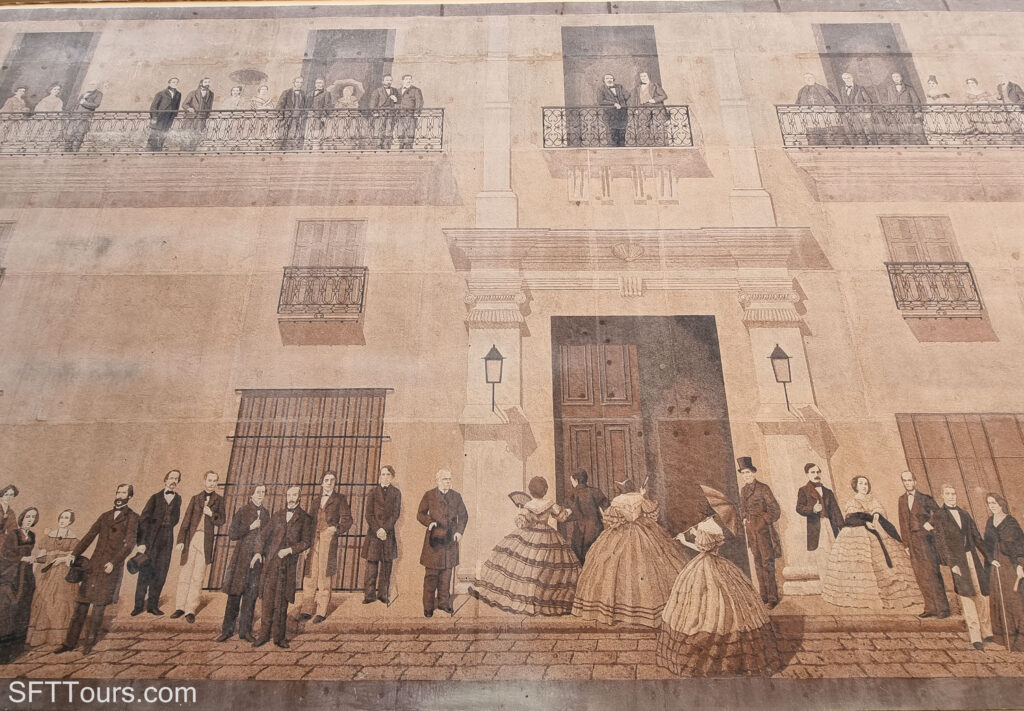
Led by Fidel Castro, Che Guevara, and other revolutionary figures, the Cuban Revolution sought to overthrow the U.S.-backed dictator Fulgencio Batista. On January 1, 1959, Castro’s forces succeeded, and a socialist government was established.
The revolution marked a significant shift in Cuba’s trajectory, with land reforms, nationalizations, and an alignment with the Soviet Union during the Cold War. Most of the sugar plantations and other iconic industries such as the rum distilleries were nationalised, and brands such as Bacardi abandoned Cuba and moved to Puerto Rico.
The Bay of Pigs Invasion in 1961 and the Cuban Missile Crisis in 1962 heightened Cold War tensions, making Cuba a focal point in the geopolitical struggle between the U.S. and the Soviet Union.
With the collapse of the Soviet Union in 1991, Cuba faced economic challenges. Heavily dependent on financial support from the USSR, the fall of the Soviet regime meant the loss of a major trade and financial partner. This plunged Cuba into economic crisis and was forced to reconsider the closed communist regime.
Tourism was one of the first industries to develop in a semi-capitalistic manner as a means to collect hard currency in a controlled manner.
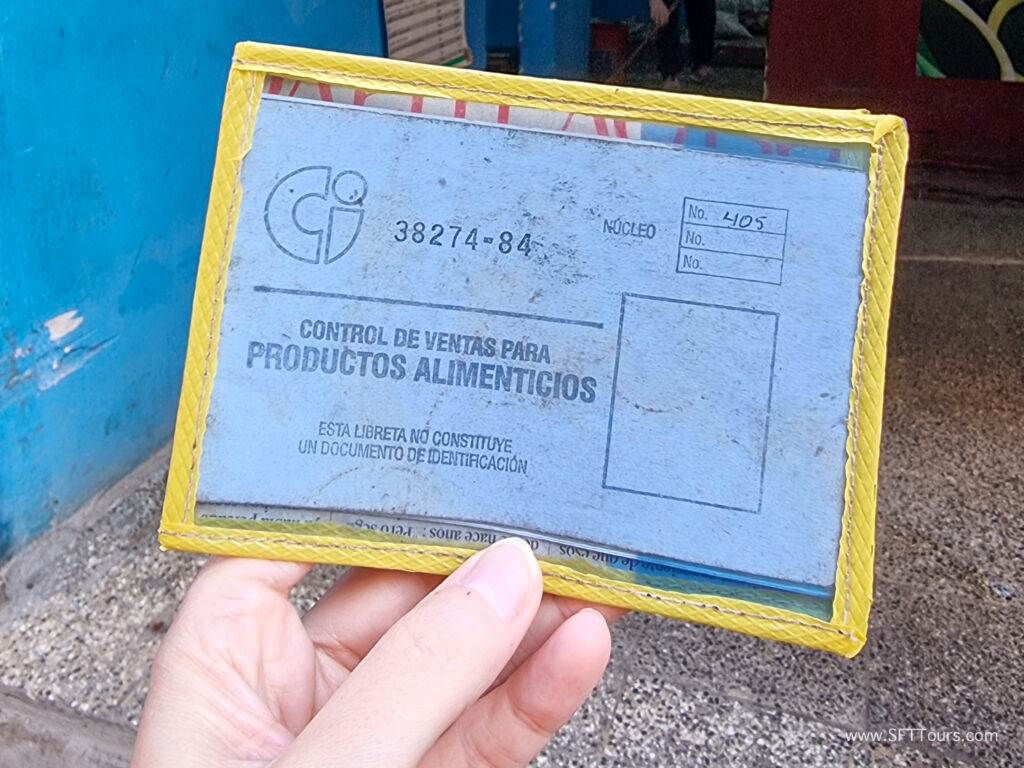
However, Cuba maintained its commitment to socialism and rationing cards are still used, albeit with major scarcity of goods.
Since 2013, there have been gradual economic reforms, including increased private enterprise, especially in the tourism industry, with the spread of casas particulares (private homes) and paladares (private restaurants).
The normalization of relations between Cuba and the United States in 2014 signaled a potential shift in diplomatic ties, especially with the lifting of travel restrictions for Americans to visit Cuba, although certain aspects of the embargo remain and some of those measures were put back on.
At the beginning of 2021, President Trump added the country to the State Sponsors of Terrorism list, and subsequent presidents have not removed it.
Today, Cuba is a colorful, one of a kind nation that is a mix of European, African, Caribbean and American heritage all within the confines of a small island with about 10 million inhabitants.
No matter who you speak to, Cubans are in either one of two camps: proud citizens with a strong attachment to the country and the willpower to weather any storm, or actively seeking better opportunities overseas.
Cuba today
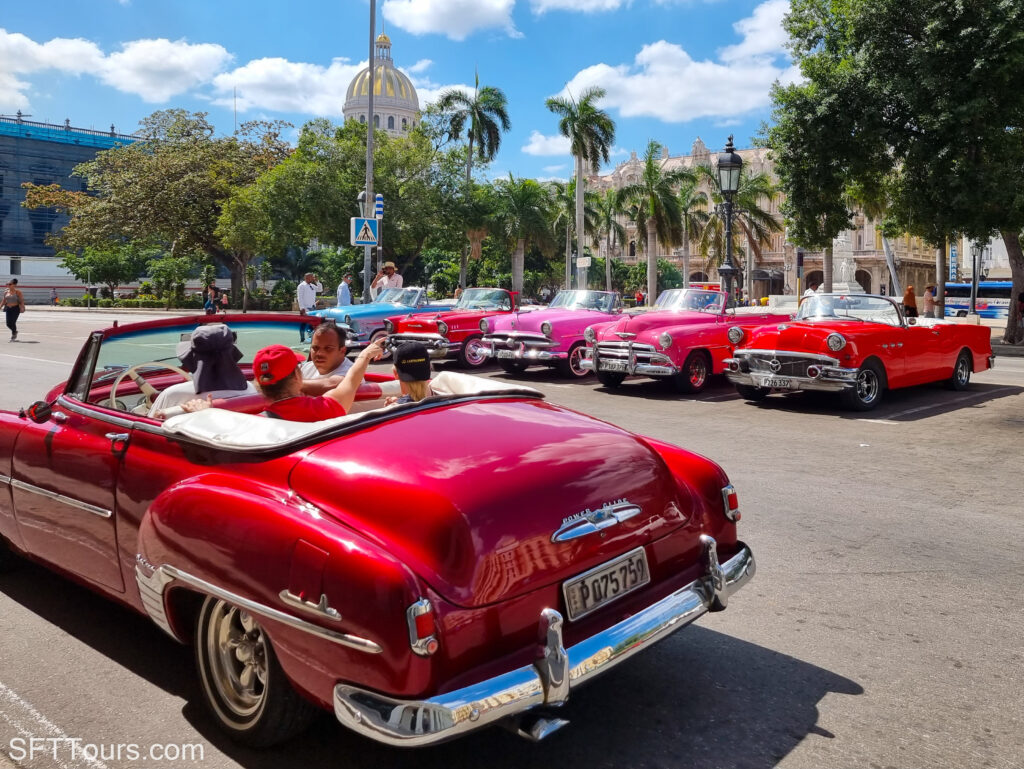
Cuba is a complex and complicated country to understand as a foreigner because it cannot be compared to any other place.
My most important recommendation is to visit with an open mind and try to understand, even if at times, things don’t seem to make any sense.
Cuba is a communist / socialist country that was established following the most basic principles of communal production, and full state ownership and management of the resources.
Most Cubans earn a salary that is between USD $30 and $50 a month. This amount could be enough to live off because healthcare and education is free and services such as water and electricity are very cheap.
Cubans get rationing cards with an allocation of food per month including rice, bread, etc. but this is not enough to survive, and once you’ve spent a couple of days in Cuba you will realize that the monthly salary is what you spend in a day.
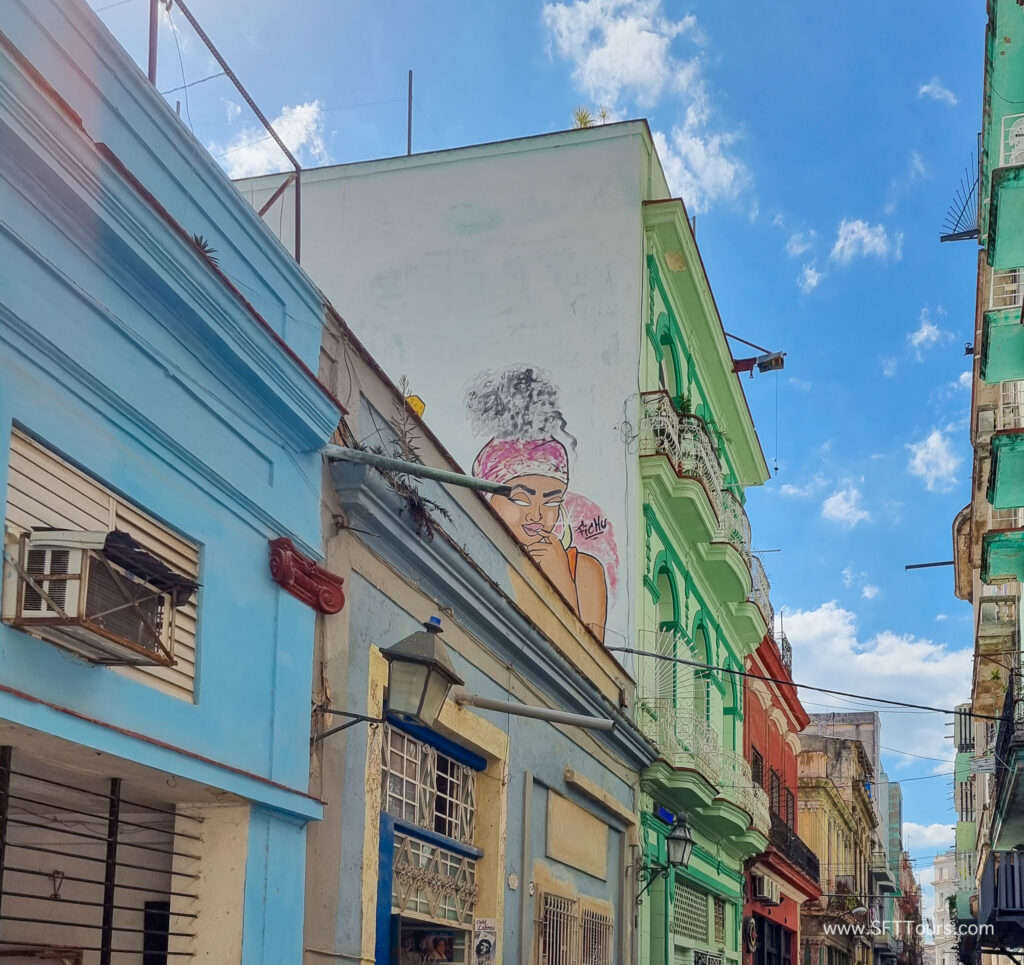
Most locals will have a job on the side that they do to make money for things like clothes, fun and food. This all happens on the black market and is very much related to tourism.
The creativity and hustling involved in these side jobs is called la lucha or the daily struggle, and it is fascinating.
Cubans are highly literate, extremely resourceful and creative and will find a way to generate an income and to find solutions to any problem even with limited to no means.
Since the laws changed in 2013 allowing private enterprise, every Cuban has a small business on the side or works for someone, in addition to their official job.
A teacher could work as a day tour guide, a doctor could start a small paladar, a mechanic makes handicrafts for tourists and fixes classic cars for the tourist rides, etc. everyone has something to offer, sometimes just information such as helping you locate your accommodation, finding your way or getting a taxi.
Quick facts about Cuba
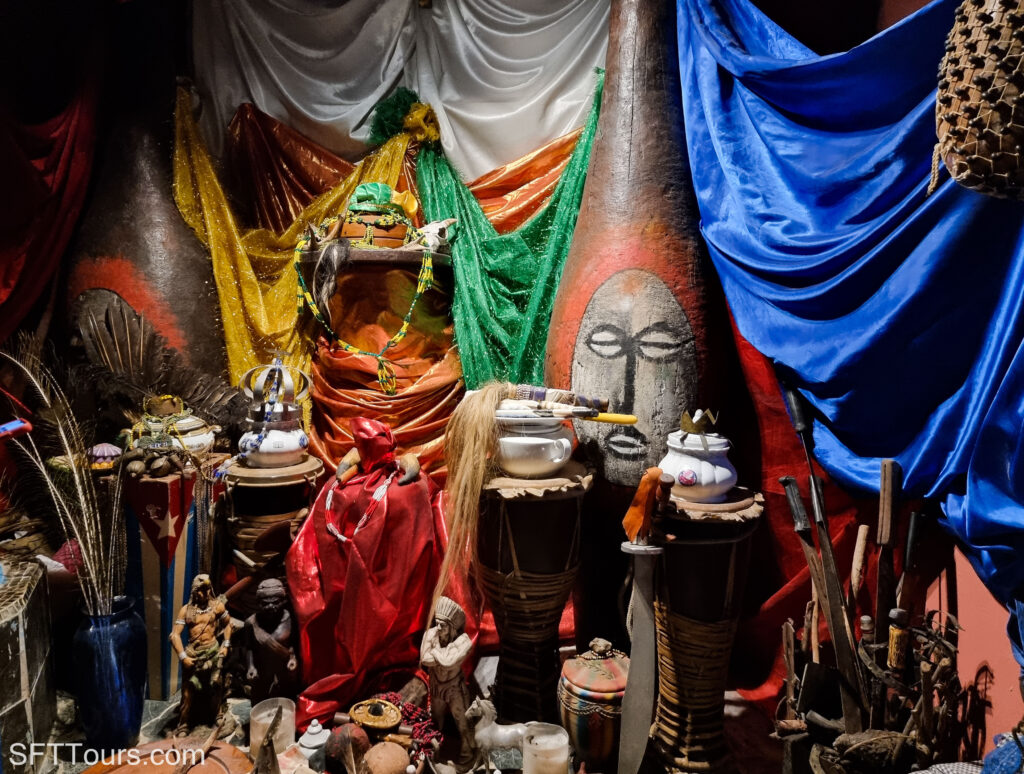
I have included a few interesting and unique facts about Cuba that are not mentioned in the other sections of this travel tips article, so that you have more background on the country.
That said, a lot of the reality of day to day life today in Cuba is hard to comprehend even after your initial visit.
- Due to import restrictions that started after the revolution in 1959, Cuba is known for its streets filled with vintage American cars from the 1950s, which are still in use today. These are are very well taken care of by their owners and can cost upwards of $100,000. They are easily rented for a one-hour drive around Havana from the many parked in Parque Central, and is a highlight of our women-only tour to Cuba!
- Cuba’s healthcare system has long been considered one of the best in the world, despite the embargo and the country’s economic situation placing severe limitations on the acquisition of new equipment. Among its many achievements, Cuba was the first country to eliminate mother-to-child transmission of HIV and syphilis, as validated by the World Health Organization in 2015.
- Education is freely available to all Cubans and literacy rate is considered to be almost 100%.
- Cuba is the largest island in the Caribbean. The country has a population of about 11 million people.
- There are 2 million Cubans living abroad, primarily in the US but also in Spain. The COVID period of 2021 to 2022 saw the largest influx of Cuban migrants into the US in Cuba’s history with close to half a million people escaping economic hardship. The US offers special conditions for Cubans to legalise their status since 2023.
- One cannot talk about Cuba without referencing music and dance. Mambo, Cha-cha, and Rumba, as well as music genres like Son Cubano, have influenced the development of salsa music and dance internationally and were born in Cuba.
Cuba travel tips
Cuba is a very unique place so it’s important to do your research to know what to expect and prepare for your trip. In this section, you’ll find lots of tips and advice from previous trips!
Visas and other entry requirements
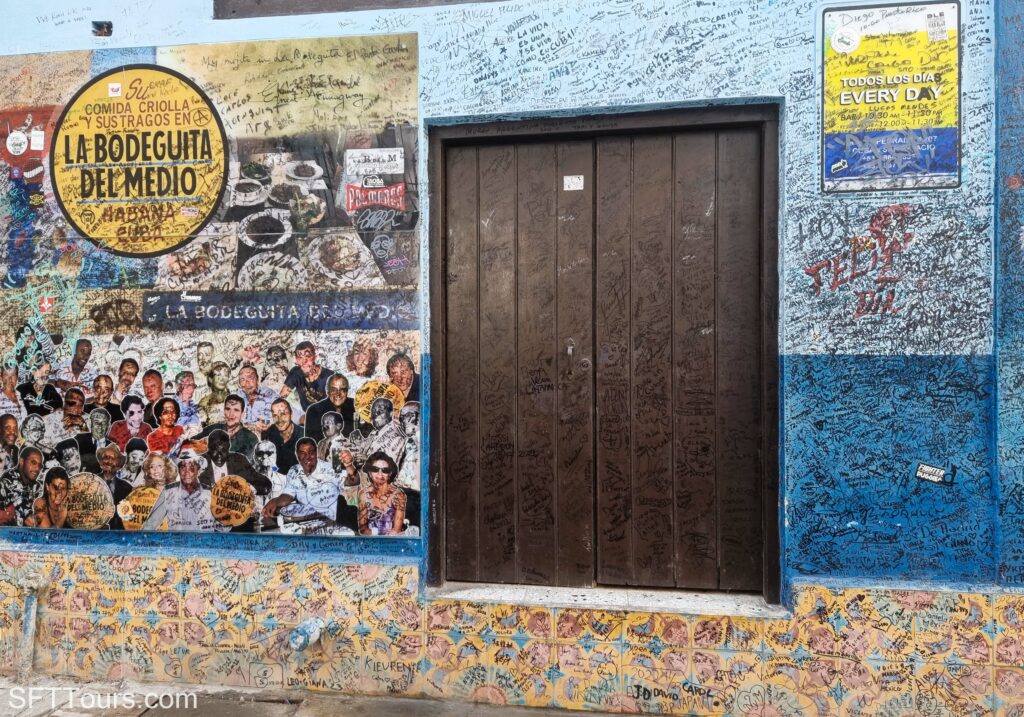
To enter Cuba you need a passport that is valid for the duration of your stay in Cuba, and is valid for at least one month after your departure date. However, I recommend making sure it is valid for at least 6 months after your departure and that it has at least 2 blank pages, just to be safe.
You will also be asked to show a return flight either by the airline staff or immigration upon arrival.
Cuba is replacing the former tourist card with an eVisa which can be obtained online. This is a major improvement on the previous physical card but because the system is new, it has its quirks and like with everything else in Cuba, things don’t work as expected for the rest of the world.
The official Government website to apply is this one, but it only accepts cheque, wire transfers or money orders. To access credit card payments, you can get your eVisa via a third party service provider like Easy Tourist Card here.
In addition to obtaining the evisa, US nationals, residents or travelers who arrive in Cuba via the US require a license to travel to Cuba legally.
This is not a Cuban requirement but a US Government requirement to its citizens and those who are subject to its laws, as is the case if you fly to Cuba via the US.
The word license is a bit misleading here because rather than a document it is a set of rules to follow when planning a trip so that it complies with US requirements and is a “meaningful visit” rather than just a vacation.
None of the general license categories require any prior government approval, if you follow the rules of the license you selected, you are automatically considered “authorized”.
These set of rules follow the idea of allowing travel to Cuba to Support the Cuban people and not the Cuban Government. You can read all the details here but essentially, all our tours are designed to comply with the legal requirements of the license.
All you need to do is keep receipts of everything you spend and a copy of your signed affidavit which we will provide prior to the tour. You need to keep this for 5 years.
If anyone (immigration officers, airline staff, etc.) asks why you are traveling to Cuba, you can simply answer the license type you are traveling under, ie. Supporting the Cuban people.
Lastly, to enter Cuba you also need to fill in an arrival form which can be found here. After filling it in you will receive a QR code which you need to have with you.
Health and safety
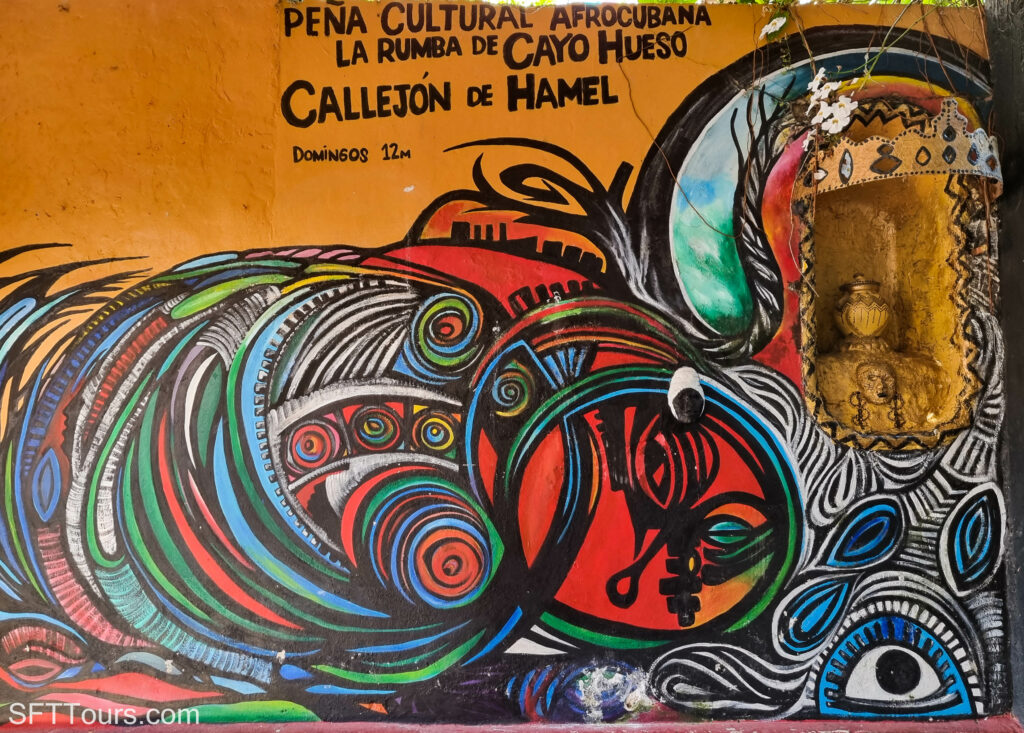
Heath and safety is important when traveling. Nobody wants to be sick overseas, and when traveling long distances, eating foods you are not used to and sleeping in a different environment, it is much more likely to be a bit under the weather.
Here are a few health tips to consider in general and for Cuba in particular.
- Crime. Cuba is very safe and crime is very low. This is due to the fact that police are everywhere and well paid, unlike most Cubans, and that small crimes carry lengthy jail terms, especially if the target is a tourist.
The only thing you should worry about is opportunistic theft, especially of electronics such as phones and laptops, pickpocketing and bag snatching at night in Havana Vieja and Santiago de Cuba.
Leave any expensive jewelry at the hotel or even better, at home. Avoid walking around at night as streets are poorly lit and bring a torch instead of your phone, to light the way. Take taxis to return to your accommodation, even if it’s just around the corner. Don’t accept drinks from strangers unless they are in an unopened can or prepared in front of you, and don’t leave your drink unattended.
IMPORTANT: When we conducted our first Solo Female Travel Survey, one of the most relevant take-aways was that women who travel solo unanimously worry about their personal safety. The best countries for first time solo female travelers all have safety in common. That’s why we created the first and most complete resource for women who travel solo to find safety information by country or destination.
With safety data coming from the US and UK Travel Advisories and the Global Peace Index, the index considers factors like the risk of theft, scam and harassment, as well as analyzing attitudes towards women in each country to rank each country from 1-4, 1 being the safest and 4 being the most dangerous for solo female travelers.
Cuba is currently rated as a decently safe destination for solo female travelers on our safety index. Exercise regular caution and review our safety tips for solo female travelers to ensure you stay safe and have a rewarding and empowering travel experience.
- Street harassment for women. Cubans are chatty and will take every opportunity to talk to you. While this may feel overwhelming if you don’t speak Spanish and are constantly talked to by men with romantic vocabulary, bear in mind it is very much a cultural habit and not always the result of street harassment or done with ulterior motives.
However, casual sex is also a staple of life in Cuba so the assumption is that a woman alone is looking for just that. Additionally, marrying a foreigner is the fastest way to emigration and one that many Cuban men and women will at least try their luck at.
It does not help that Cubans are very friendly people and talk to each other using terms of endearment such as “darling”, “lovely”, “baby”, etc. even someone you don’t even know.
Saying good morning / day to a stranger passing by is normal and there are many jineteros or hustlers standing around looking to make some money off helping you or just trying their luck at something else. They are harmless for the reasons I mentioned above, but can be overwhelming, so avoid eye contact and stay firm on saying “no”.
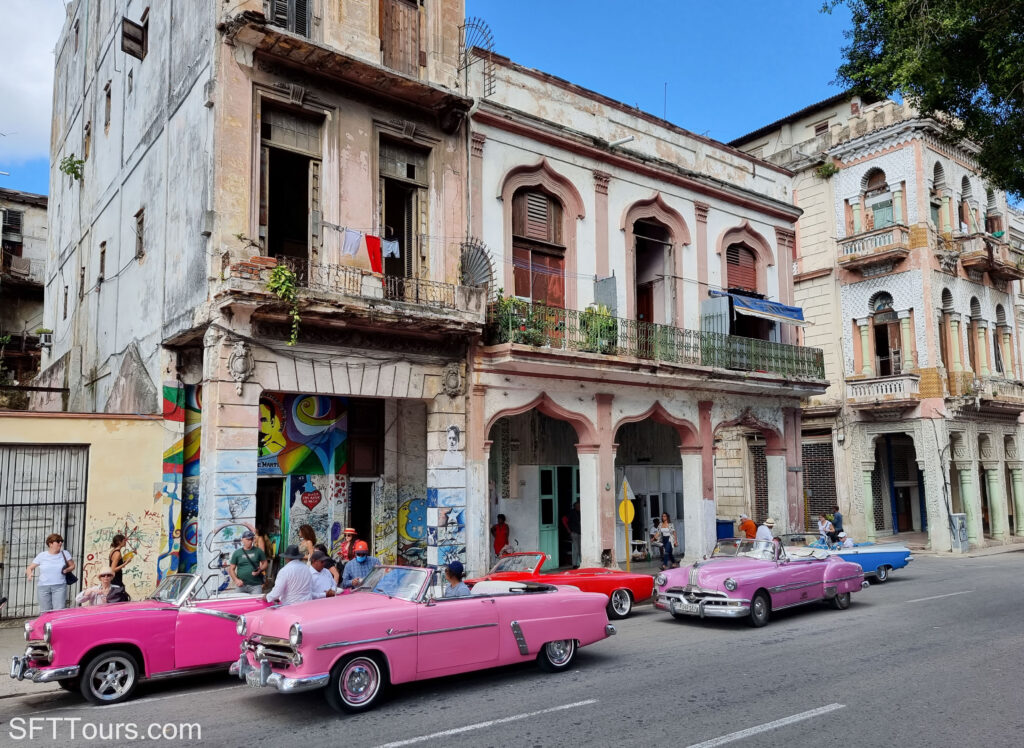
- Walking in the streets of Old Havana. The main appeal of Havana’s UNESCO listed city center is the charming yet run down look of the Art Deco and Neoclassical facades painted in bright pastel colors. Sadly, many of them are in desperate need of a coat of paint and haven’t been maintained in years.
Most locals walk in the middle of the street, as it may not always be safe to walk under the balconies and facades of such old buildings which could occasionally literally fall apart. It helps that traffic in Havana is minimal and there are very few cars in the roads.
- Common scams. There are a variety of scams that can happen to you anywhere you go and Cuba is not an exception. Because locals are generally poor compared to most visitors, a lot of scams work around asking you for help, be it money to buy a bus ticket or a bag of milk, even though after you’ve bought the item, it will go back on the shelf and scammer and shop owner will split the money.
Taxis, coco taxis and bicycle taxis will also try to scam you in a variety of ways so it is important to confirm the price before you get in the taxi. If the amount seems too good to be true (eg $1 for the ride), you should be skeptical and expect that they will try to scam you of more and pretend they said $10 not $1. This happened to me and it developed into a major altercation that I had to threaten to call the police for.
- Get vaccinated in advance. You should take necessary precautions to keep yourself safe from potentially deadly diseases.
Consult with your doctor ahead of the trip, at least 6 weeks before departure, so you leave enough time for the vaccines to take effect. Depending on where you live, some vaccines may not be immediately available from your GP and may have to be ordered.
The CDC recommends vaccination against COVID, hepatitis A and B as well as typhoid fever and rabies. It is also a good idea to check that you are up to date with routine vaccines such as chickenpox, tetanus, etc.
Proof of vaccination against yellow fever is required for travellers to Cuba aged 9 months or over, arriving from countries at risk for yellow fever transmission, and for travellers having transited for more than 12 hours through an airport of countries at risk for yellow fever transmission.
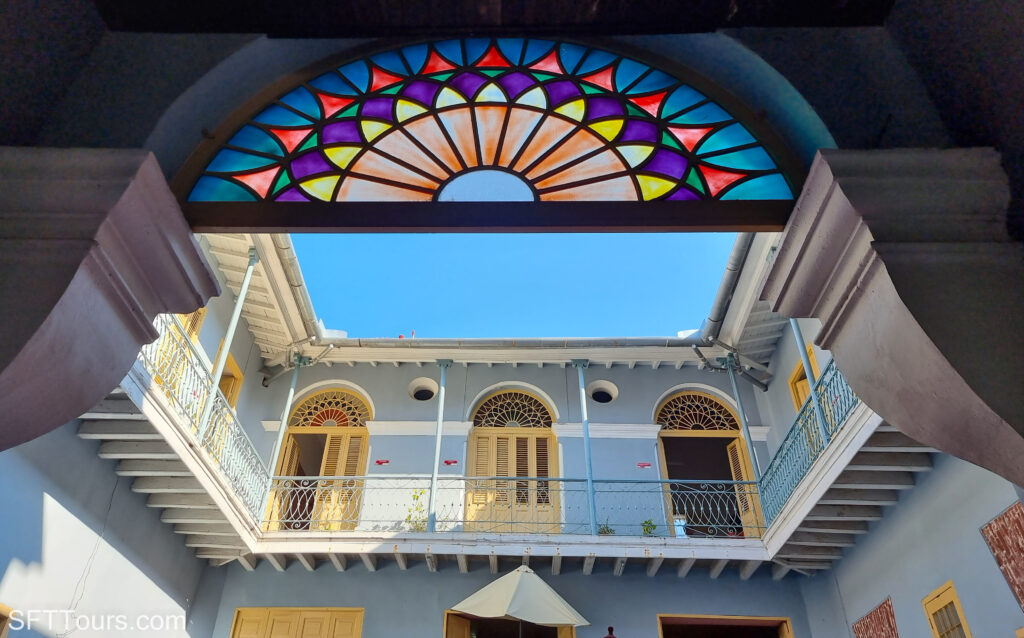
- Mosquitoes. There have been reported cases of mosquito-borne diseases such as fika or dengue. Mosquito repellent will be hard to find in Cuba so carry enough with you.
- Bring all the medication you’ll need. Cuba has suffered severe scarcity of basic drugs and medication for decades so you should bring everything you need with you, including a well stocked first aid kit and additional stock of any medication you take, in case your trip is extended.
IMPORTANT: What may be legal in your country, or even sold over the counter, could be a controlled substance in Cuba. If you do not have prior permission or the required documentation, the medication will not be allowed in and you may be prosecuted under the law. If you’re travelling with prescription medication, carry a letter from your GP that specifies your condition, the quantity of medication you will be carrying and that the medication is for your personal use only. If you are unsure, you can email the Cuban customs: [email protected].
- Sanitary products. Sanitary products are severely lacking in Cuba and will be hard to find. Carry enough items of your favorite brand to last you for the duration of the trip.
- CPAP. There is no distilled water in Cuba so if you need to use a CPAP machine, you’ll have to bring your own along with an extension cord to plug the machine as there may not be one near your bed.
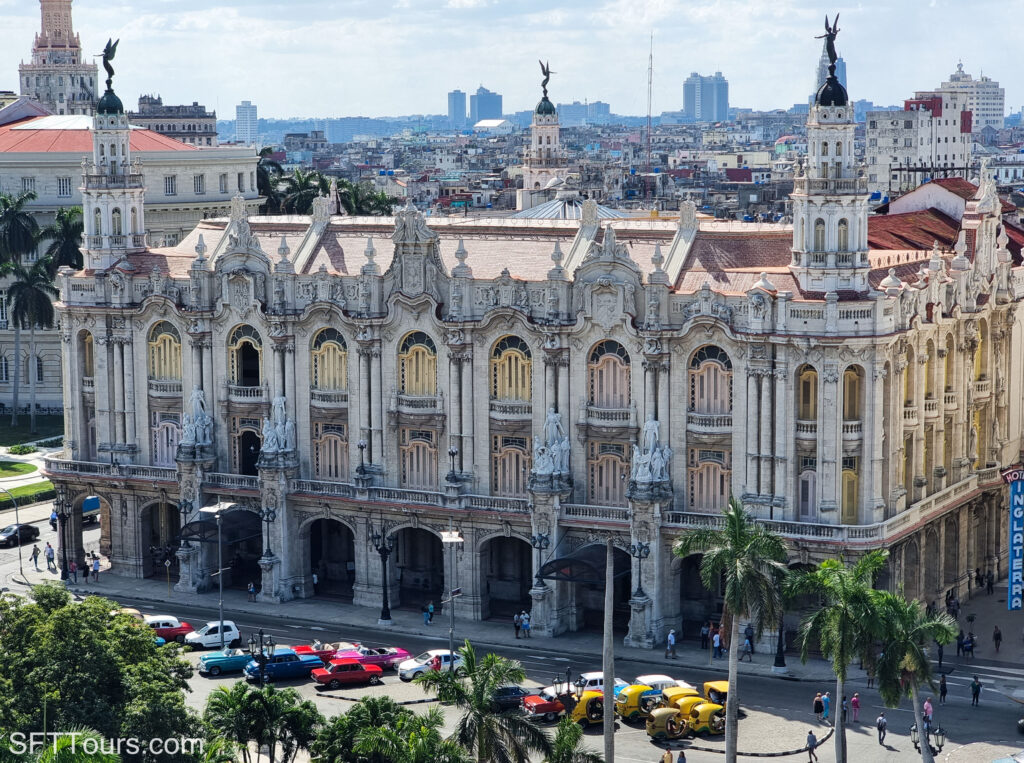
- Travel insurance is compulsory to travel to Cuba. I never leave the house without purchasing extensive medical and travel insurance coverage and this is why we make it mandatory to join our tours, but in the case of Cuba this is also an entry requirement without which you will not be allowed into the country. There are spot checks at the airport where the authorities will ask that you produce the details of your insurer and policy.
If you are flying from the US to Cuba, your boarding pass will include medical insurance from the Cuban healthcare system. To join our trips, you also need to purchase additional insurance from an internationally recognised company that includes repatriation.
In case you need medical attention, you will have to settle your bill with the hospital at check out via credit card, or via your insurance company. Cash payments at hospitals are not accepted.
It’s worth noting that the best travel insurance will differ for each traveler, depending on the nature, style, and length of their trip, so I recommend using an aggregator and comparison tool such as Travel Insurance Masters to find the right one for you depending on what coverage you want, age, location, trip, etc.
- Don’t drink the water. Diarrhea affects as many as 40% of travelers. It is not only the fact that water may not be potable or drinkable in some places but also that you may not be used to the same kind of water or food and that could cause an upset stomach.
In Cuba, you should not drink the tap water and opt for bottled water. To avoid single-use plastic, I recommend bringing purifying tablets, a purifying water bottle or to refill your bottle at the hotel breakfast where there is always potable water available, or in the bus where we will have it available for you if you are traveling on our group tours.
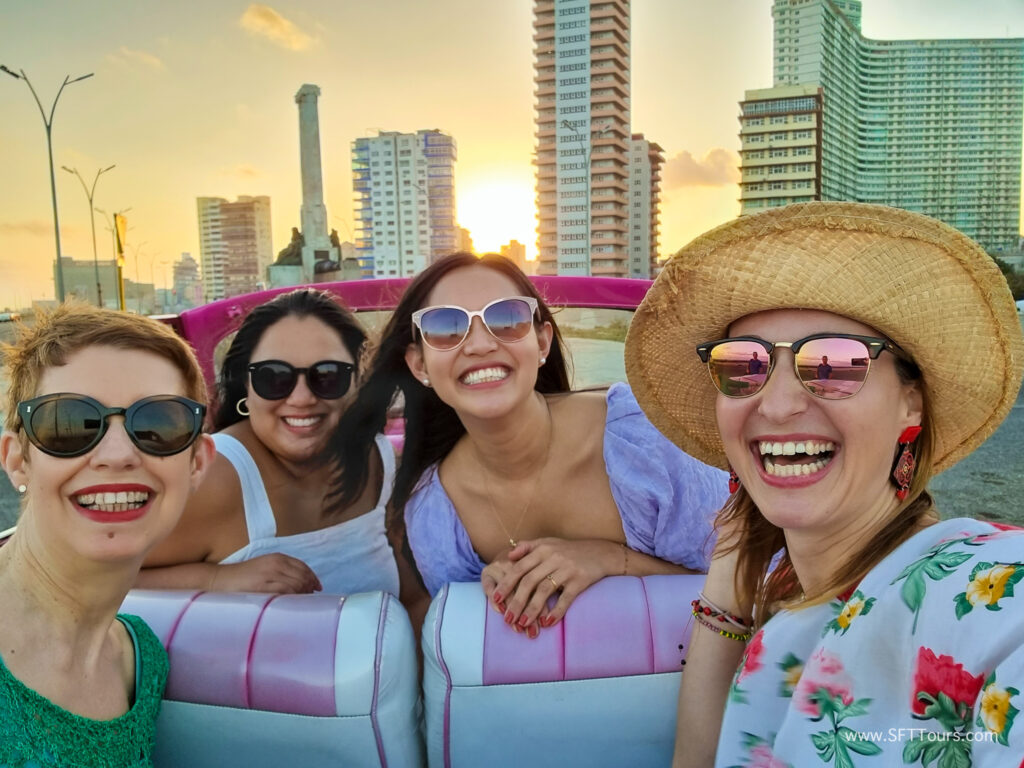
- Driving in Cuba. While foreigners can rent cars and drive in Cuba, the fuel shortages make long journeys difficult. You should plan for this by stocking up on petrol when you can. Locals usually know the latest in availability of petrol at nearby stations, so ask around.
- Toilets: If you are driving across Cuba like we do on our tour, you will unavoidably need to use a variety of public toilets, some of which may not have high standard of hygiene and cleanliness. Water and soap or even toilet paper may be lacking. Bring hand sanitizer, tissue, liquid soap and wet towels to wash your hands.
- Register your trip with your travel embassy. Several countries offer support and updates for nationals traveling overseas.
The US has an online system to register your travels so they know to get in touch or locate you in case of any emergency such as a natural disaster. You can register on STEP here. Canadians can register as a Canadian abroad here.
Australia offers a subscription service where you can get notifications of important news for the destination you are visiting. Subscribe here.
Other countries may not have online registration systems, but you can always reach out to your local embassy in Cuba and let them know you’ll be in the country and your travel dates.
US travel restrictions to Cuba
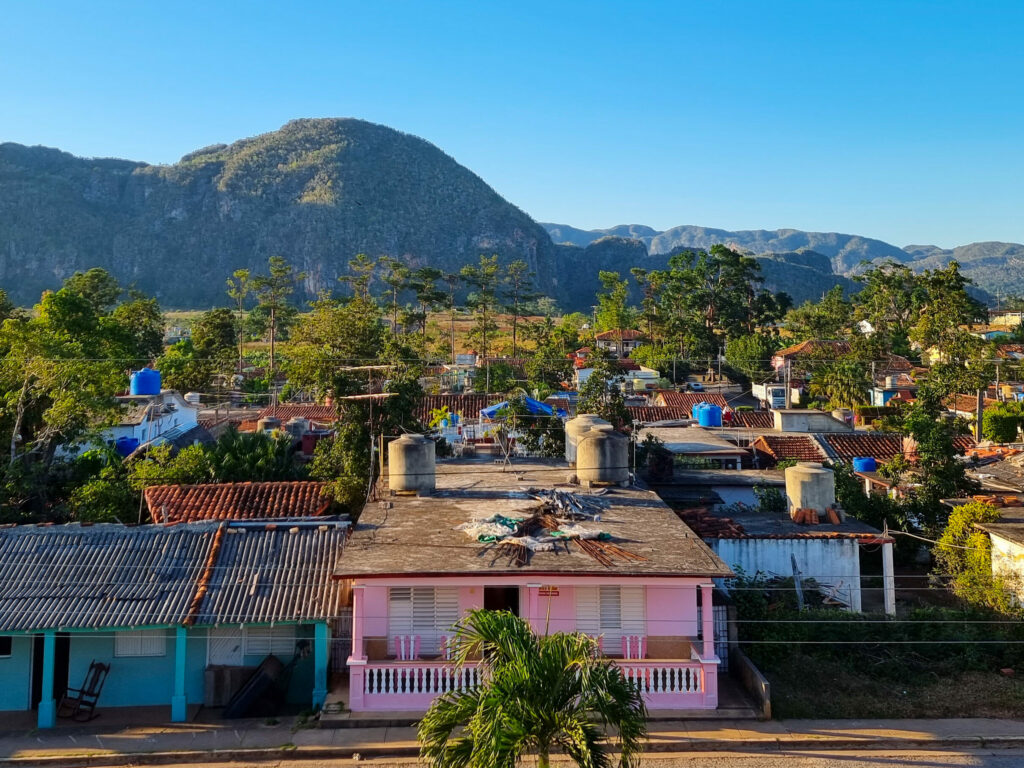
Important: This section refers not to Cuban requirements, but to US Laws that apply to US nationals and all foreign nationals who are either resident in the USA, or travelling through the USA en route to Cuba. That is, even if you are not from the US, if your flight transits via the country, you are subject to the same regulations as US nationals.
Many US citizens assume that they can’t travel to Cuba legally and that they need to fly via Mexico or Canada and pretend they never went to Cuba. This is no longer the case and traveling to Cuba on direct flight is possible, as long as certain criteria and requirements are met.
The rules around travel to Cuba for US nationals, residents or those in transit can be confusing, so I’ll explain them below.
Legally, US law does not permit travel directly from the USA to Cuba for tourism purposes. However, it does allow for travel from the USA to Cuba, including on the direct flights which operate between the two countries, if done for one of 12 permitted reasons / categories of travel.
Tourism isn’t one of these 12 permitted reasons / categories, but Supporting the Cuban people is. If you have booked a tour to Cuba with us, you are already in compliance with the requirements.
Our local partner clarifies the ways in which a traveler can ensure they support the Cuban people with their trip, thus complying with the legal requirement:
- Use privately owned businesses (e.g. private restaurants, private shops, private taxis, etc.)
- Stay in privately owned accommodations. Staying in hotels is not permitted if they are on this prohibited accommodations list and with few exceptions, every hotel is on the list.
- Maintain a full schedule (considered 6-8 hour daily) of meaningful interactions that “Enhance contact with the Cuban people, support civil society in Cuba, or promote the Cuban people’s independence from Cuban authorities and that result in meaningful interactions with individuals in Cuba”.
Here are some industry-wide suggestions that are considered acceptable:
– Supporting local artists by visiting galleries and/or purchasing art
– Conversing with your hosts at your casa particular
– Volunteering
– Taking lessons (dance, language, music, sport, etc)
– Shopping in privately owned businesses
– Eating at privately owned restaurants
– Taking guided cultural/historical tours
- Avoid transactions with Cuban Government entities on this prohibited list. For tourists the most important entities to avoid are the hotels and shops listed. For example, most 5-star hotels are prohibited so you wouldn’t want to make purchases there.
- Document your activities and transactions in a ledger or travel journal and maintain the records and receipts for 5 years
For more information see the US Department of the Treasury website and the US State Department’s travel advice for Cuba. For travel-specific questions, see the Code of Federal Regulations 31 C.F.R. 515.560 and the US Treasury’s Office of Foreign Assets Control (OFAC) frequently asked questions.
Important: If an immigration office or airline staff asks you why you are traveling to / from Cuba to / from the US, your answer should start with “To support the Cuban people”. Have the rest of the documents ready with you (affidavit, diary, copy of your itinerary).
Travel essentials for Cuba
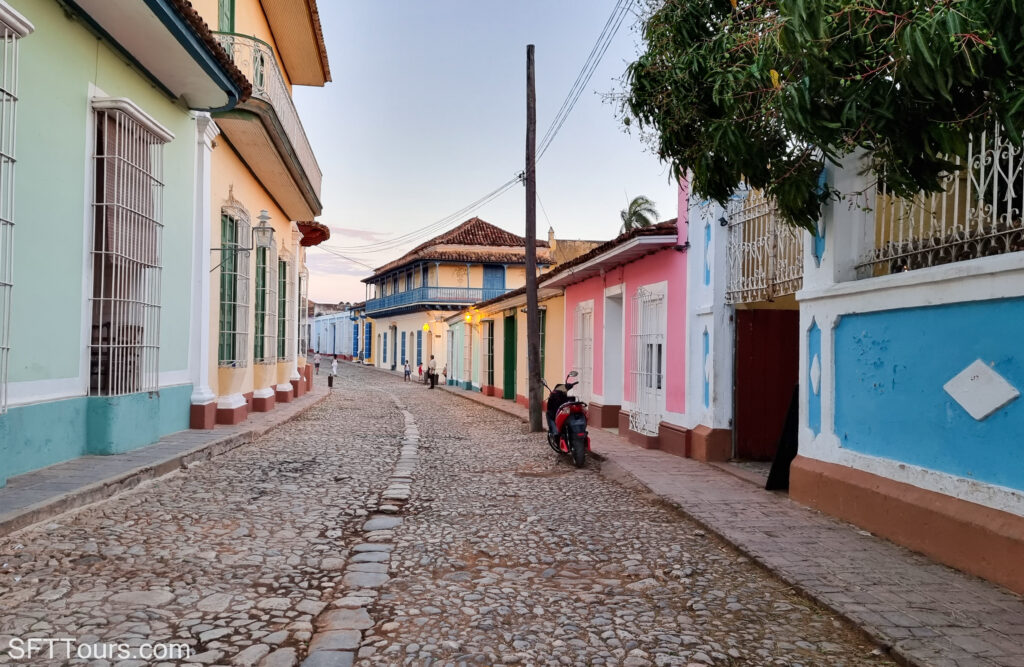
We’ve talked about health and safety but there are a few more Cuba travel tips to get through.
- Luggage. Cuban regulations allow a maximum of two pieces of checked in luggage per person, each to a maximum weight of 32kgs. This is independent from what your airline may allow. You could grab an electronic hand luggage scale which you clip onto the handle of your bag and simply pull upward to reveal the weight to make sure your bags are never overweight again!
I recommend also having a padlock to lock your suitcase, both at the casas (safety boxes may not be available) and when checking it in as theft has been reported at the airport.
Important: Travel light and do not pack more than you can carry. There are no lifts in Cuba except for at the new luxury hotels, so you should not bring luggage you can’t easily carry yourself up and down stairs and through cobblestoned streets.
- Stay connected if you must. While I advocate for a digital detox when on holidays, and a trip to Cuba is the perfect occasion to do so, if you wish to stay connected, it is now possible to get mobile internet in Cuba.
The easiest way to order your Tourist SIM card from Cubacel online here prior to your trip and collect it at Jose Marti airport terminal 3 before immigration. You can also buy them at the telco shops in Havana but the queues are long and stock is often not available.
Make sure your phone is unlocked by your telecom provider back home and for just a few dollars you’ll be able to share your experience on social media.
Tip: If you buy a local SIM card, let the store staff set it up for you before you leave the shop so they can enter any necessary APN settings.
- WiFI. Just a few years ago, WiFi offered in parks and squares was the only option for Cubans to get online. Things have improved a lot in the last 5 years and WiFi is now available in many hotels. The accommodations we stay at during our trip all offer WiFi, except for when we stay at private homes.
- Airport. Havana International Airport has two main terminals. Both are supposed to offer 30 min of free WiFi upon arrival, but it is best not to count on it working. Luggage delivery can take a while so be patient. Your bags will be screened on the way out of the airport.
To go from the airport to the city if your transfer has not been organized (our tours include airport pick up), you can take a taxi for around $25-35 or the shuttle whcih runs from 11am to 4pm from Havanatursa.com (book ahead).

- Casas particulares. Now you know that all travelers from the US (citizens, residents and those in transit) cannot stay at international hotels, this is why ours and many other group tours, choose to stay at casas particulares for the duration of the trip.
Casas are essentially private homes, like a small B&B opened by a family where they rent one or more of their rooms to tourists. Some casas are humble Cuban homes where granny may be watching TV in the living room with you, while others are closer to what you would describe as a proper B&B or Inn, with beautiful common areas, nicely decorated rooms and 24h staff.
Most of the casas are available for booking on any regular hotel booking platform or on Airbnb. Some may have their own websites. Outside of Havana, the range of available B&B-style casas is limited and you are more likely to stay in actual private homes.
There are various levels of comfort in casas across Cuba. Some have AC, some don’t. Some offer cooked breakfast, some don’t offer any breakfast. But regardless of the standard, they are all homey and one of the best parts of visiting Cuba.
On our tours, we stay at the highest standard of casas all of which come with towels and bed sheets, AC and hot water, private bathrooms, good beds and cooked breakfasts. In Vinales and Cienfuegos, the group will split into a few different casas as there isn’t one that can host the entire group.
- Electricity. Power outages are very common in Cuba, especially outside of Havana. Plan to have a power bank with you if you need to charge electronics.
Outlets are usually 2 prong and flat (like in the US), but can also be 2 prong and round (like in Europe), so bring an adaptor.
Voltage is between 110 V and 220 V. It is not recommended to bring high power items such as hair driers which could trip the power if you are staying in a casa.
Money matters
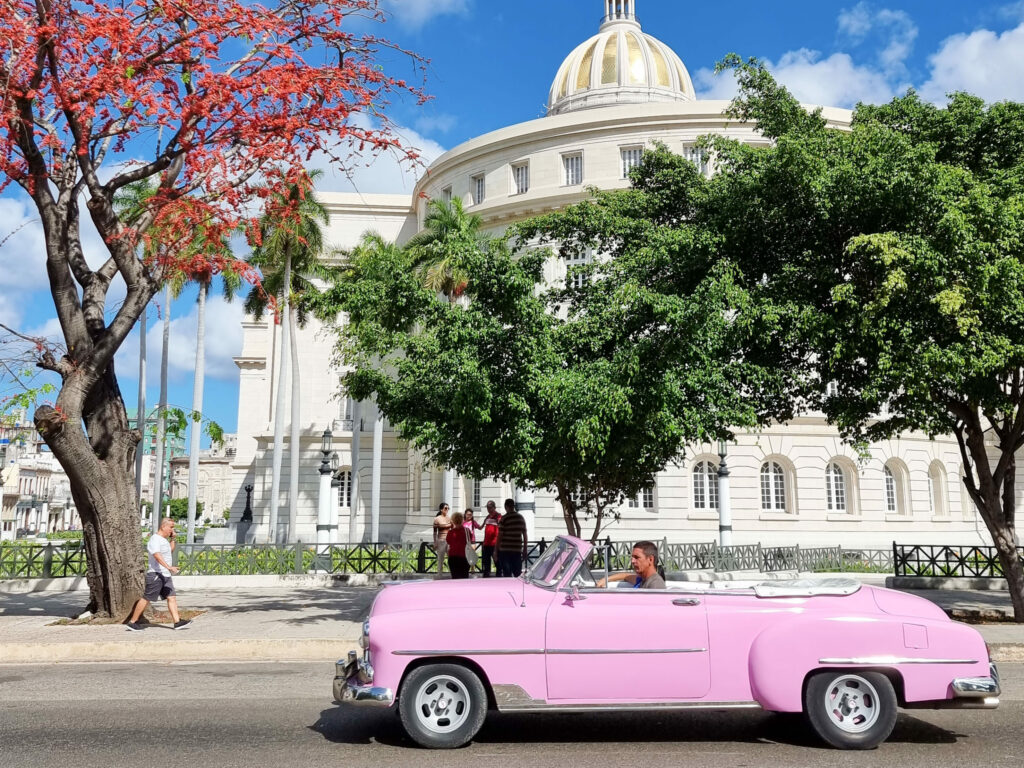
The most complex topic when preparing for a trip to Cuba is money.
You should work under the assumption that all the cash you bring with you is all the cash you will have for the duration of your time in Cuba and that it will not be possible for you to use any other electronic means of payment.
This is why we make our tour all-inclusive, so that you don’t have to worry about running out of cash for the important things like food, drinks or activities.
You should also calculate more money than you think you’ll need. Every traveler to Cuba underestimates the cost of items, especially after the elimination of the CUC in 2021, Cuba, particularly Havana, is not a cheap city and has prices that are comparable to many European countries.
- Exchanging cash. The official local currency is the CUP, the Cuban National Peso also known as moneda nacional (MN) cannot be obtained outside your country and it will also not be exchanged back so you need to spend it all in Cuba.
You can exchange USD or EUR at the official Casa de cambio (cadeca), which are managed by the Government, but you will get a much better exchange rate elsewhere, and faster.
The official exchange rate since 2022 is 120 pesos to 1 USD but you can easily get 150 / 160 pesos to 1 USD at Casas particulares, paladares or even at stores, without having to queue for a long time for your turn.
Note that exchanging anywhere but at the Cadeca is illegal, even though that’s what every tourist does. When changing USD, an 8% conversion fee will apply so the effective rate is 110CUP = 1USD. All other currencies have a 2% conversion fee.
Cubans are very keen to get your EUR or USD because they are either saving to emigrate to the US or Spain or have family there, so almost anyone will give you pesos for your hard currency.
- Bring more cash than you think you’ll need. Havana is not as affordable as you think. A short taxi ride can easily cost $10-25 and a cocktail could be $10-$20. A meal at one of the regular restaurants can easily be $15-25. If you want to shop at the many beautiful stores owned by local women, prices are not far off from what I pay in Spain. This all adds up.
Since US Dollars and EUR are widely accepted and exchanged at restaurants and casas, bring more of either of these two currencies just in case. You can always take it back if you don’t use it, but you won’t be able to access more if you run out.
- Small notes, but not coins. Make sure to bring small notes and not higher than $100 / 100 EUR as it is rare for people to have that much cash on them to exchange it for you. Carry most of your cash in $5 / $10 / $50 or 5 / 10 / 20 / 50 EUR notes so you can pay directly in these currencies.
EUR / USD coins and $1 USD notes are useless in Cuba as they can’t be exchanged or deposited so they won’t be accepted.
- Bring pristine notes. Not all bank notes will be accepted. Make sure that your EUR and USD notes are pristine and have no tears or damage.
- Credit cards. The embargo means that credit card companies such as Mastercard and Visa are banned in Cuba and will only be accepted at high end hotels, hospitals and clinics and some shopping mall stores. In these places, cash is not accepted as payment and only cards are, but not if they belong to US banks.
Everywhere else (casas, paladares, local stores, etc.), credit cards will not be accepted.
Remember that if you are a US citizen or arrived via the US, you are not allowed to support these international hotels and what more obvious way to flaunt the law than by using your credit card to pay for your sunset drinks at the beautiful Kempinski Hotel Manzana?
- ATMs. Withdrawing cash from one of the very few ATM machines in Havana is all but a fleeting dream.
Most of them have extremely long queues, when it’s your turn you will realize they either don’t work properly, are out of order or money, or do not accept your country’s card for reasons you cannot figure out.
If you bank with a US financial institution, your card won’t work and even if you bank with the European branch. I tried it with my Singapore-issued Citibank card, and my Spanish visa and both were declined. Best is to check with your bank before your trip.
- Exchange small amounts. Since you can’t exchange your CUP back to USD / EUR and you can’t take them out of the country, exchange in small amounts by paying with a 50 EUR note for a 25 EUR meal and receiving the change in CUP.
Tipping in Cuba
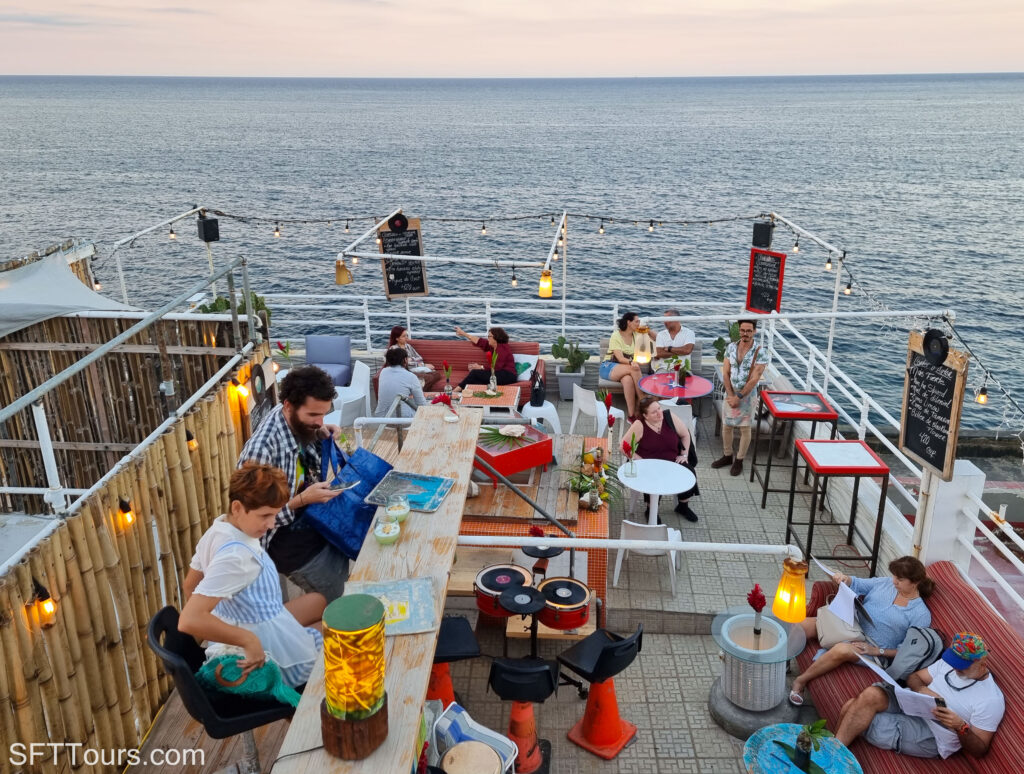
Tipping is always a personal decision based on the service you have received. However, tipping in Cuba is customary and expected in most interactions, and there will be plenty of people singing, dancing and busking in the streets expecting a small tip (eg. 150 CUP).
Note: $1 notes cannot be deposited in the bank by Cubans so if you plan to tip locals, don’t give them $1 notes but instead tip 150 CUP. Coins are also useless.
Below is a guideline for tipping:
- Tour Driver – $2-3 per day
- Activity Guides (e.g. Museum guides) – $2-5
- Restaurants – 10%, this may be included in the bill, in this case we encourage you to round up for a little extra.
- Musicians – $1-2
- Taxis – If you negotiate the fee, you don’t need to tip although for heavy luggage $1-3 is appropriate.
- Bathroom attendants – 60-80CUP
- Guesthouse Staff – $1-2 per night
Local customs and culture
Our travel tips for Cuba would not be complete without talking about the local customs and culture in Cuba as well as the idiosyncrasies that make the country so unique.
- Drones. For the time being, drones are not allowed in Cuba and you should avoid bringing them in because they will be confiscated and kept at the airport until your departure. However, it could be time consuming to get it back.
- Ask for permission not forgiveness. During your trip in Cuba, you will undoubtedly meet colorful locals, beautiful women, fascinating artisans, and will find yourself in many situations where the scene is just stunning and worthy of capturing on a photograph.
While locals are always friendly and ready to chat, you should be mindful and ask before taking photographs. Never take photos of minors, it is not only inappropriate but also against the law. You wouldn’t like a stranger taking photos of your child so don’t take photos of other people’s children.
Note: In Havana and other cities you will find women dresses in colorful clothes who are ready to pose for a photo in exchange for a tip. Agree on the price ahead of time.
- Photography. While taking photos of cities and landscapes is generally fine, avoid photographing military or government structures.
- Learn some basic Spanish. Knowing some basic words can be useful to communicate with the locals, show politeness and respect and even negotiate a taxi ride or order lunch.
Useful Spanish words
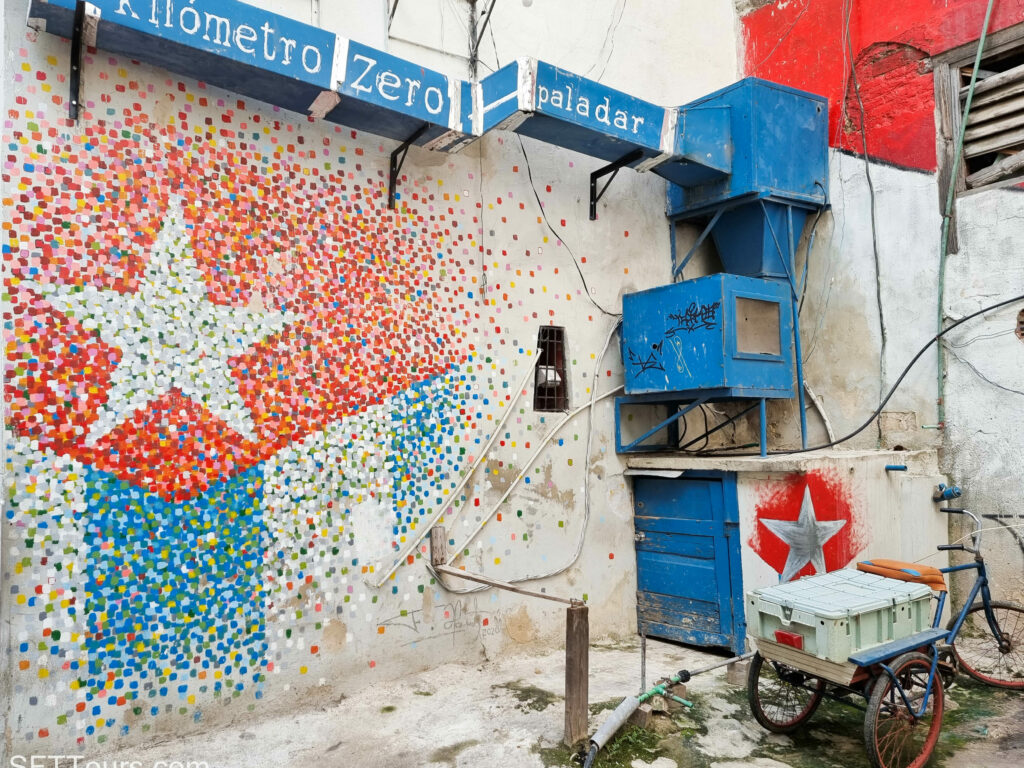
Cubans speak Spanish that is remarkably similar to Spanish from Spain in vocabulary but has a distinct accent that is very much Caribbean in nature.
Learning some basic Spanish words is useful to get around Cuba, especially outside of Havana where English is spoken less.
Below are some useful words for you to know:
- “Hola” – Hello.
- “Buenos dias” – Good day, morning.
- “Buenas tardes” – Good afternoon.
- “Buenas noches” – Good evening, night.
- “Adiós” – Goodbye.
- “Hasta luego” – See you soon.
- “Por favor” – Please.
- “Gracias” – Thank you.
- “De nada” – You are welcome.
- “Cuánto cuesta?” – How much?
- “Cómo estás?” – How are you?
- “Salud!” – Cheers!
- “La cuenta, por favor” – The bill, please.
- “No te entiendo” – I don’t understand you.
- “Perdón” – Sorry.
- “¿Dónde está el baño?” – Where is the toilet?
What to eat and drink in Cuba
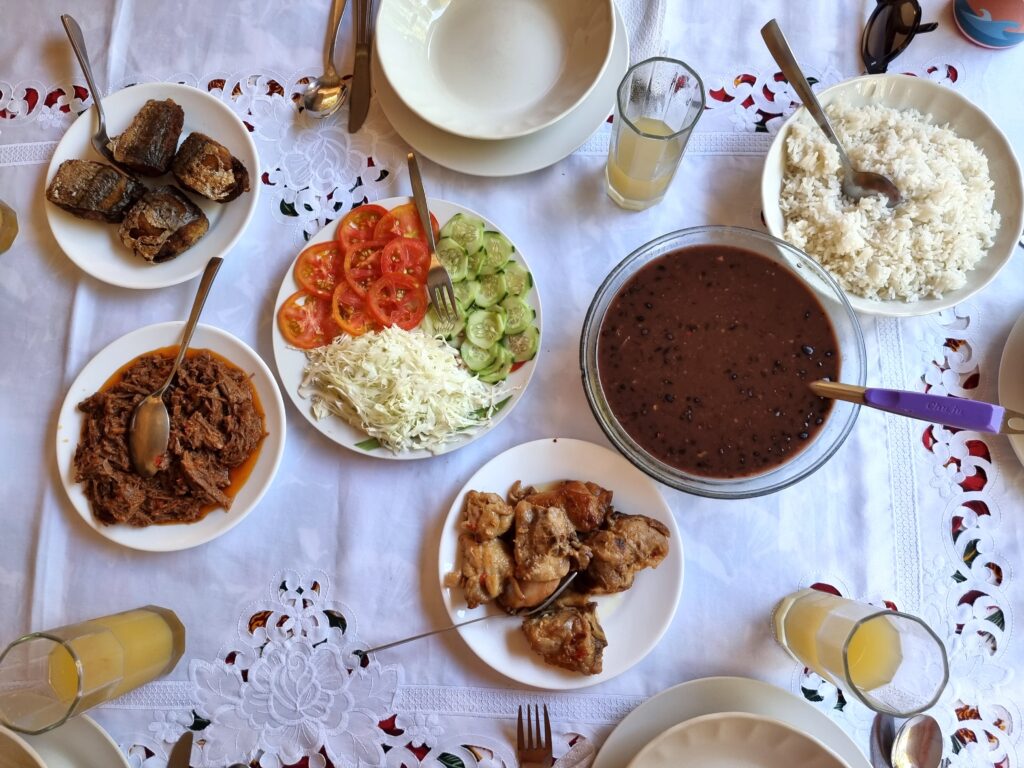
Cuba has suffered from an economic blockage for decades and this means that food imports are minimal and the country eats and drinks what it produces nationally, often organically and manually.
The basis of Cuba’s cuisine is creole with strong influence from Spain, especially on the desserts front. Because of its location in the Caribbean, you can expect Cuban cuisine to be marked by tropical fruits, fish, chicken and rice, just like other Caribbean nations.
Historically, you may have read that the food in Cuba is terrible. It indeed used to be extremely repetitive and limited, with travelers eating rice, beans and fried chicken every day.
But this is no longer the case and with the proliferation of paladares and the lessening of some of the importation rules, gastronomy in Cuba is having a revival, especially if, like on our tours, you eat at people’s homes and some of the more creative and up and coming private restaurants in Havana.
In my recent trips there, I enjoyed simple, yet varied, and delicious food that is devoid of what makes food in more developed countries unhealthy and flavourless: pesticides, genetically modified crops, mass production, etc.
Note: Cuban food is not spicy and tends to be pretty basic on the spices front. Don’t be shy to bring your own bottle of hot sauce.
Below are some of the most commonly found dishes you will enjoy in Cuba:
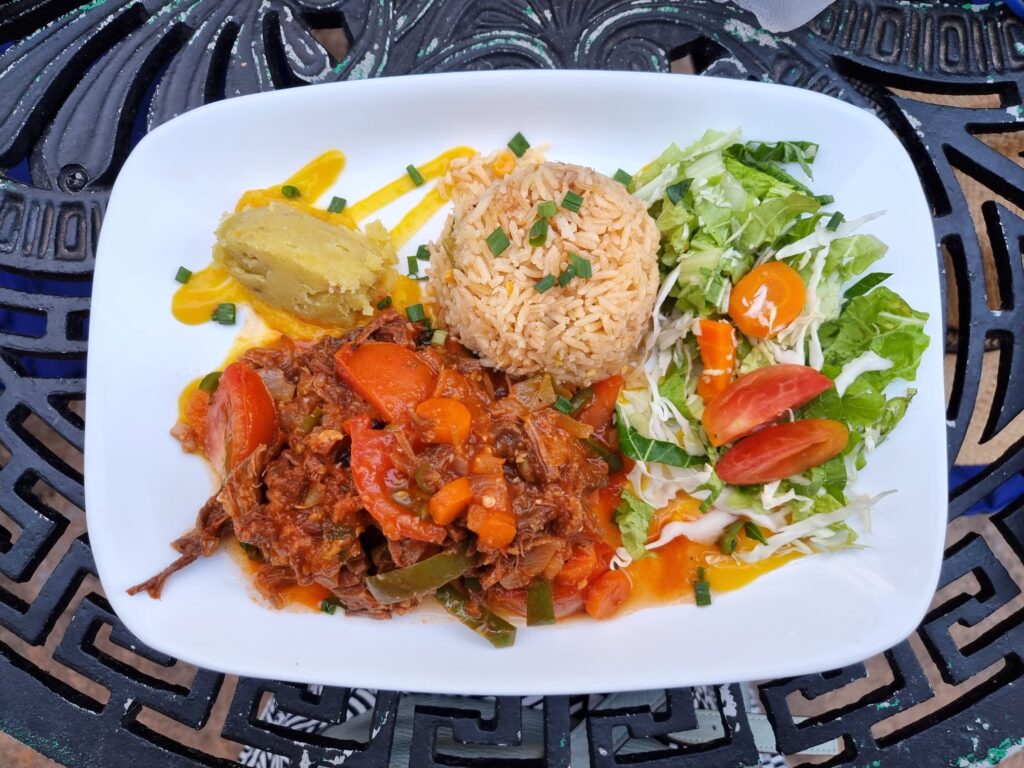
- Ropa vieja. Cuba’s most famous dish. Made with boiled and shredded meat cooked in a sauce made of onions, bell peppers, bay leaves, cumin, and more. Ropa vieja is usually made with beef but could be made with other meats.
- Arroz y frijoles negros. Fried rice and frijoles. These two are cooked separately and are the most commonly served side dish in Cuba.
- Arros moros y cristianos or con gris. Same as arroz con frijoles but instead of the two ingredients (rice, beans) being cooked separately, they are cooked together. Moros y cristianos rice used black beans while congris uses red beans.
- Lechon asado (roast pork). Pork is Cuba’s most popular celebratory meal and is made with the pigs that are locally grown.
- Yuca con mojo. Yuca, or cassava root, is one of the most common carbs in Cuba and served in large proportions. It is extremely filling, so beware when ordering it as a side dish. Yuca needs to be first boiled then fried and, in this dish, the mojo is a sauce.
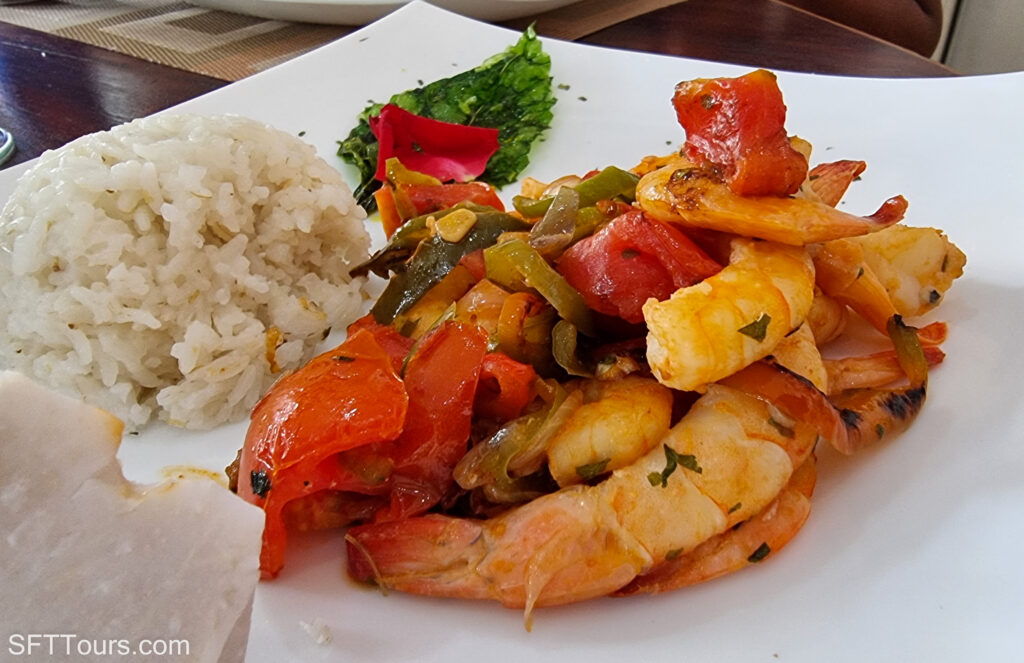
- Grilled lobster or prawns. Commonly and affordably available by the coast, lobster and prawns are Cuba is a must-try.
- Cubano sandwich. Famous in Miami and other parts of Florida with the Cuban diaspora, this sandwich needs to be served in crusty bread and a filling of ham, cheese, savory roast pork, a bit of mustard, pickles, and sometimes mojo salsa.
- Ajiaco. A thick broth made of vegetables, yucca, ripe banana, potato, pumpkin, pork, stir-fry and seasoning / spices make this a very unique creole dish to try in Cuba.
- Picadillo. Another staple dish in Cuba’s gastronomy made with ground beef, onions, peppers and herbs.
- Plato criollo. Fried chicken with beans and rice. Perhaps the most widely available dish throughout Cuba and what locals eat most frequently.
- Arroz con huevo frito. A simple yet staple dish of rice topped with a fried egg.
- Vaca frita. Literally fried cow, and made by frying shredded skirt or flank steak with onions.
- Boliche. This beef roll stuffed with chorizo is more of an upscale dish that you should try.
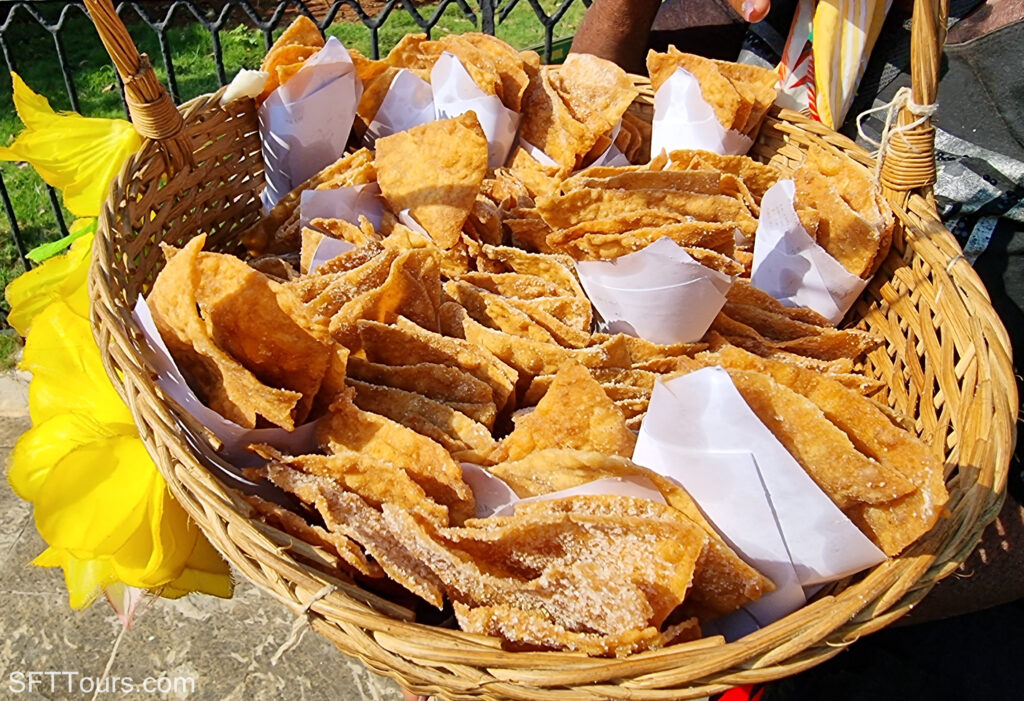
- Tostones. A great starter or snack (but be careful, they are very filling!) that is made of smashed fried plantain.
- Malanga fritters: This kind of croquette made with yuca are addictive, beware!
- Chivirocos. A wheat flour street snack made with fried dough often topped with sugar.
- Fufu. A combination of boiled plantain that is then mashed with sofrito sauce (onion, peppers, etc.). One of the few vegan dishes in Cuba, though it can sometimes also include meat.
- Platano maduro frito (Fried ripe plantain). Unlike tostones which are smashed plantain then friend, this is made with ripe plantain that are sliced and then fried.
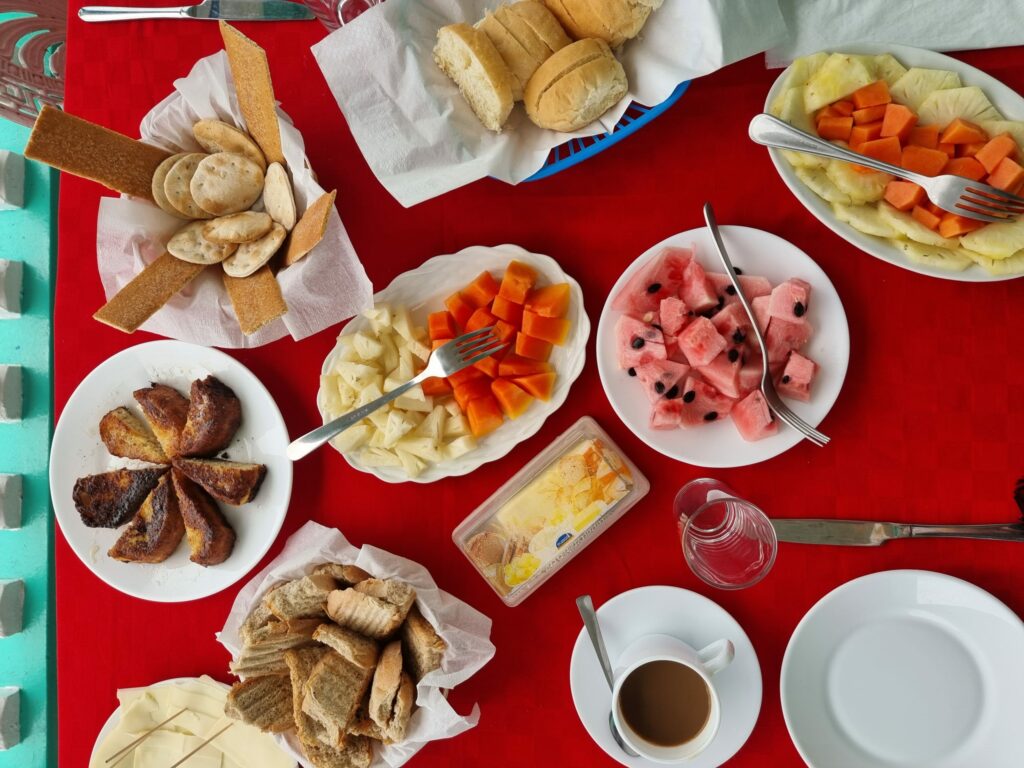
- Fruit. Fruit in Cuba is delicious because it is almost always very fresh, seasonal and organic. Pineapple snad mangos are excellent but if in season, try the more unusual mamey.
- Flan. Cream custard / jelly that is topped with caramel. In Cuba, this is made with condensed milk rather than fresh milk, so it’s creamier.
- Guayaba con queso. Cuba’s quince made with guayaba (guava) and often eaten with cheese, just like they do in Colombia.
- Cocos or coquitos. Extremely sweet grated coconut coated in sugar. They are also easily found in Cartagena, Colombia, and eaten as street snacks.
- Natillas. A Spanish-influence sweet custard desert that is like a creme brulle but without the burnt sugar layer on top.
- Arroz con leche (rice pudding). Like the versions found in Spain and across Latin America, this simple dessert is made with rice, milk, sugar, and cinnamon.
Drinks in Cuba
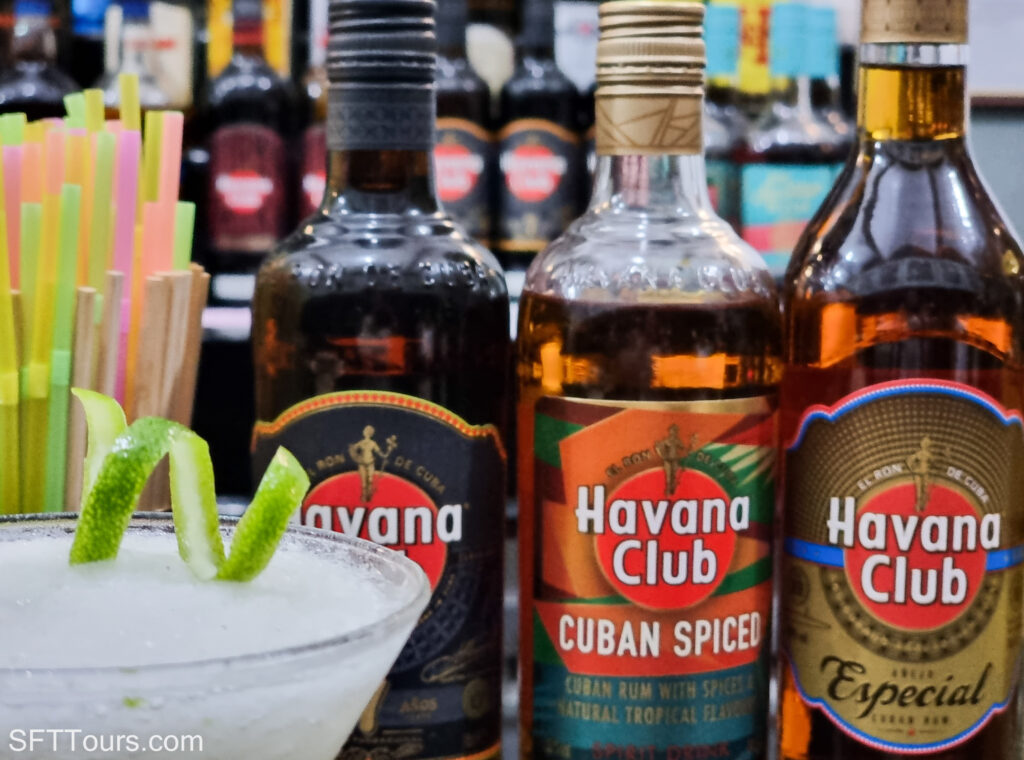
Cuba invented many of the world’s most popular cocktails and, because of the embargo and having to be self-sufficient, it also has its own range of non-alcoholic drinks and sodas.
As one of the most important producers of rum, Cuba bases all its cocktails on this spirit. You can visit the Havana Club Museum in Old Havana, and learn all about the history of this drink, taster it and even take a cocktail making class.
Fun fact: Even though Bacardi was the first to open a rum distillery in Cuba and remains the largest rum brand in the world, it is not available in Cuba. After the Revolution, all foreign companies were nationalised and Bacardi’s assets seized. The brand left Cuba for Puerto Rico and Mexico where it already had production facilities. During the tour, Bacardi is never mentioned, despite being the pioneer.
Below is a list of the most popular Cuban drinks to try:
- Prú. From the east of Cuba, Pru is a non-alcoholic concoction made from various root vegetables and herbs left to ferment, said to be medicinal.
- Cuba Libre. A cocktail called Free Cuba couldn’t be made of anything else than white rum, cola, ice, and lime juice
- Cubata. The same as Cuba Libre but with dark rum instead. Fun fact: We use the same word for this cocktail in Spain.
- Piña colada. Another rum-based incredibly popular drink in Cuba is piña colada, even though it was invented in neighbouring Puerto Rico. This is made by blending rum, pineapple pieces, cream and ice. Because cream is rarely available in Cuba, evaporated milk is used instead.
- Mojito. Made popular for being Ernest Hemingway’s choice of drink, this world wide famous Cuban drink is made with white rum, lime juice, sugar, soda water, ice, and mint leaves. The most famous place to drink it in Old Havana is La bodeguita del medio, a historical bar and restaurant whose walls are completely covered in writings and where famous people have dined.
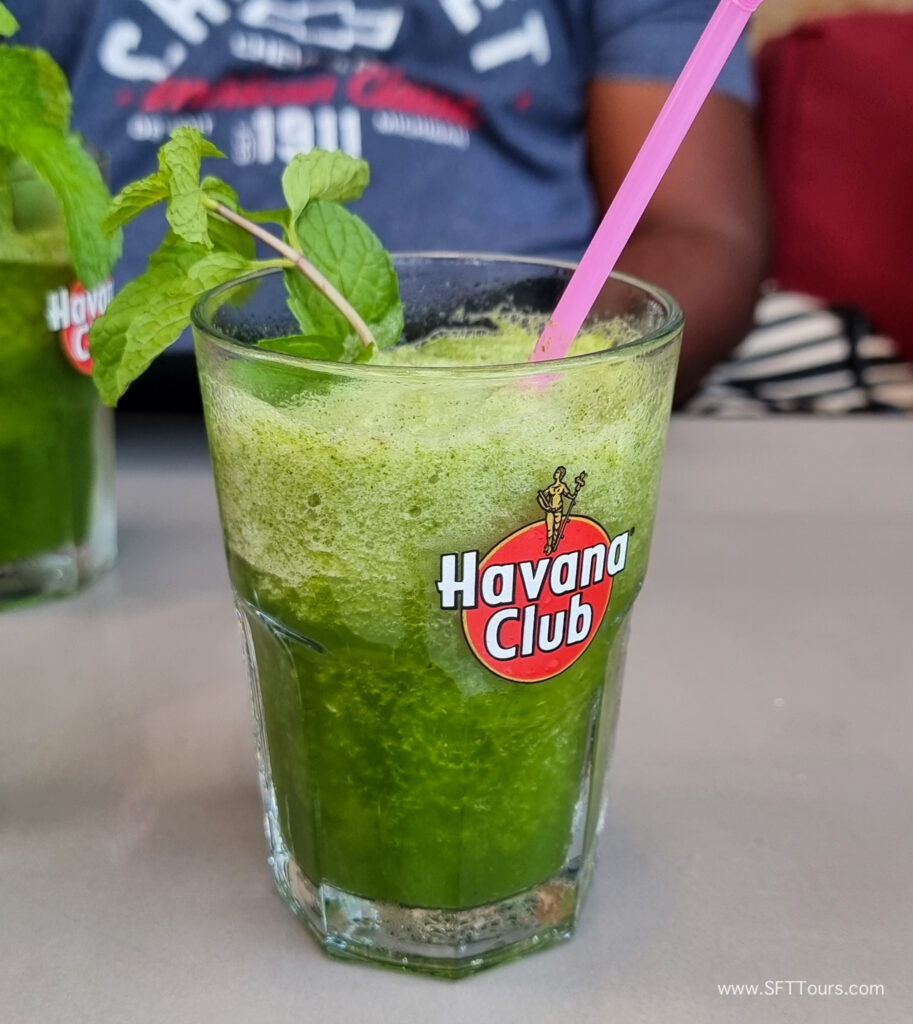
- Lemonade. Like a mojito without the rum, often served with mint. Fresh and delicious, but can be a bit too sweet.
- Daiquirí. This is also believed to be a Cuban invention made with white rum, soda water, lime juice, sugar, and marrasquino (a cherry liquor). Hemingway had plenty of these and the most famous place to drink is El Floridita in Old Havana.
- Canchanchara. Made with aguardiente, honey, lime juice, and cinnamon and served in a clay mug, this is my favorite drink to have in Cuba. Rarely found outside the country, you need to try it here, especially when in Trinidad.
- Ron Collins. Like a mojito but without the mint, or like a Tom Collins but with rum.
- Aguardiente. Unrefined rum, much more potent than regular rum, and typically used in other cocktails (like canchanchara).
- Local Beers. Cristal and Bucanero are the most commercial and widely available ones.
- Local soft drinks. Cuba has its own forms of Coca-cola (tú-cola), Sprite (cachito), and Fanta (najita). Interestingly Coca Cola can also be found, a bizarre result of the humanitarian exemption to the embargo for food products.
Books about or set in Cuba
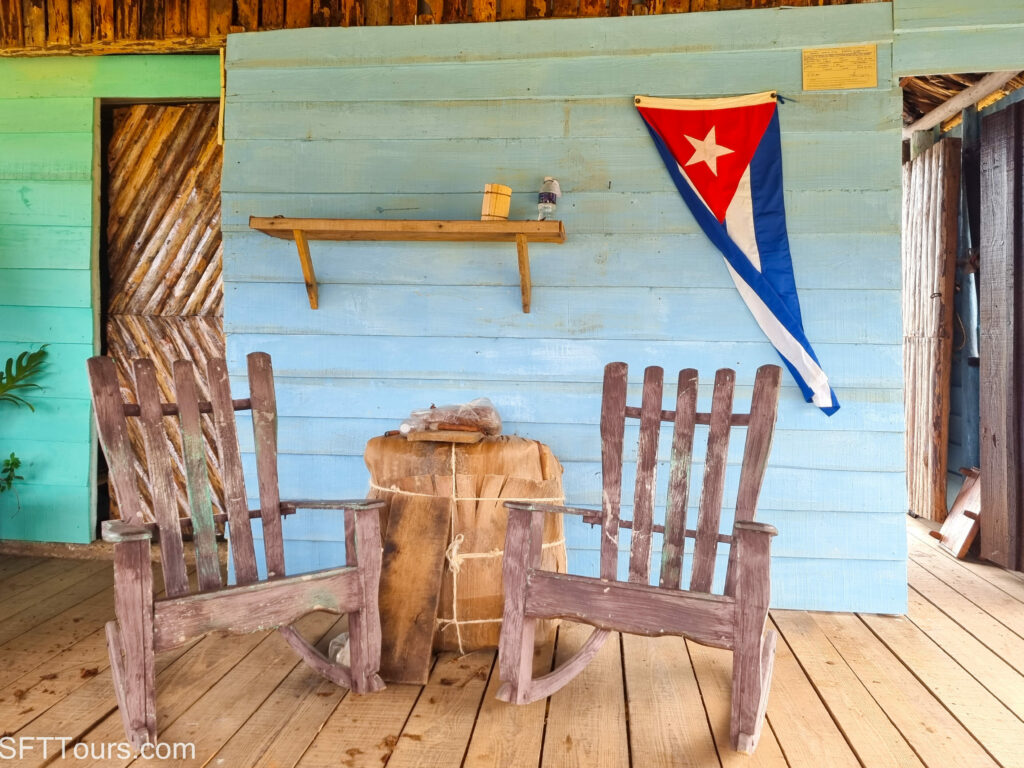
Because Cuba is so fascinating, there are lots of books and movies set and about Cuba. We will watch some in the bus on the long rides, but it a good idea to watch some to debunk myths and also have more context, especially about the pre-Castro period.
- The Cuba Reader – Chomsky, Carr and Smorkaloff: History, Culture, Politics.
- Cuba – A new History – R. Gott: For a look at Cuban history
- Conversations with Cuba – C. P. Ripley and B. Shacochis: For the views of Cuban people.
- Castro’s Daughter – An exile’s memoir of Cuba – A. Fernandez: The complementary view on one of the world’s most famous leaders.
- Cuba: from Columbus to Castro and Beyond – J. Suchticki: Anothers perspective on Cuban history.
- Cuba Libre – E. Besnard: A bank-robbing cowboy finds himself in hot water while in Cuba.
- Living Inside the Revolution – K. McCartney: Life as a female expat resident from 99 to 2005.
- Cuba Confidential: Love and Vengeance in Miami and Havana – A. Bardach: A tale of the relationship between Cuba and the US.
Movies about or shot in Cuba
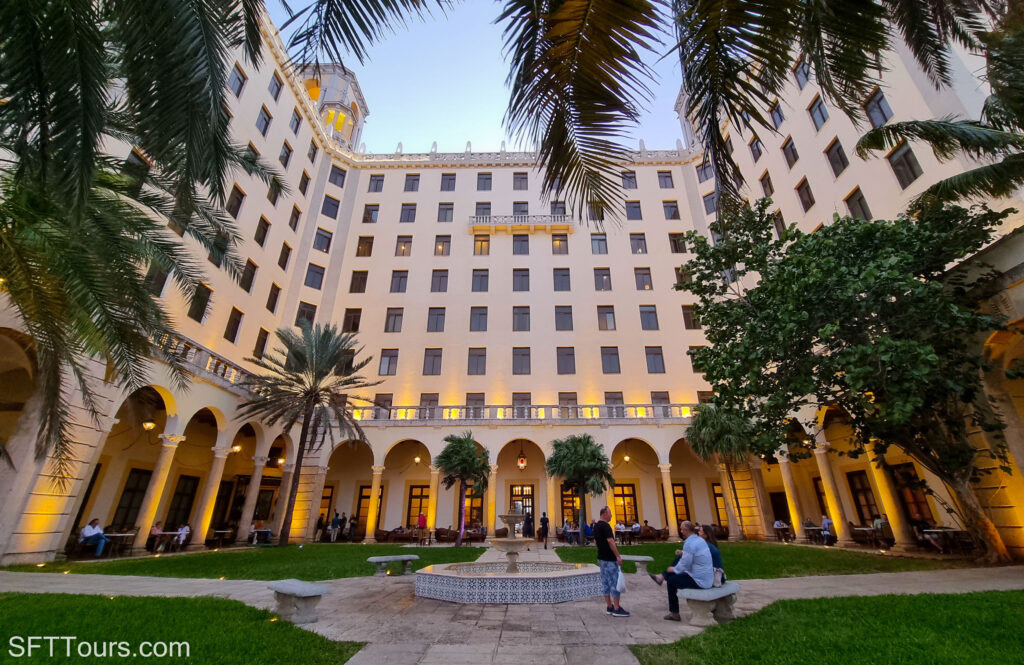
Cuba has always fascinated movie producers and that means that there are a lot of movies about the country or set in it. Below is a list of documentaries, movies and shows you can watch to learn more about Cuba or simply marvel at its beautiful landscapes.
- Before night falls – Movie about a dissident with Johnny Depp, Sean Penn and Javier Bardem.
- Guantanamera – A comedy of life in Cuba with all the contradictions and irony.
- Fresa y chocolate – Featuring what is today a very famous rooftop dining spot in Havana Vieja and exploring the friendship between gay and straight men in Havana.
- The Cuba Libre story – A Netflix docuseries that tells the story of Cuba’s history with interviews and historical footage.
- Un hombre de exito – A 1986 movie that follows the ascend of a man in the Cuba of the 1930s.
- Clandestinos – Based on real events, this movie follows a group of young men who fight to overthrow the dictatorship of Fulgencio Batista by printing pamphlets denouncing him.
- Cuba and the cameraman – Awarded filmmaker Jon Alpert returns to Cuba during 4 decades to follow the evolution of three Cuban families.
- Papa Hemingway in Cuba – A journey into Hemingway’s life in Cuba in the 1950s.

